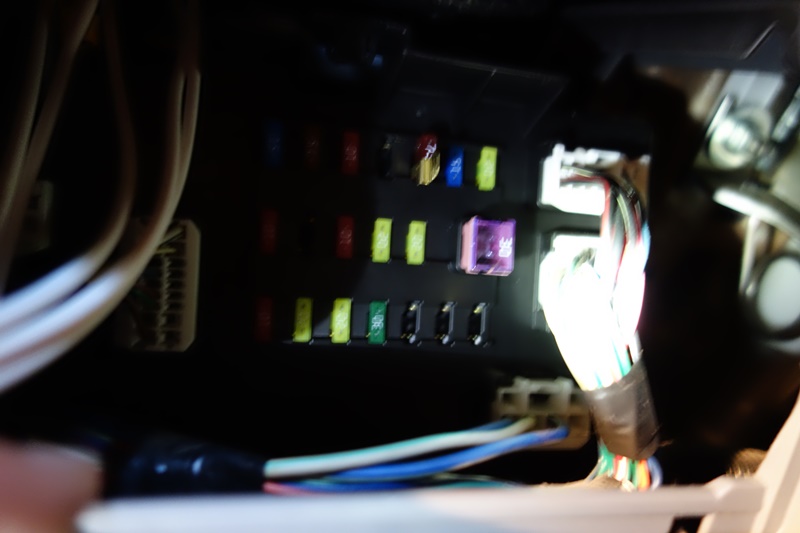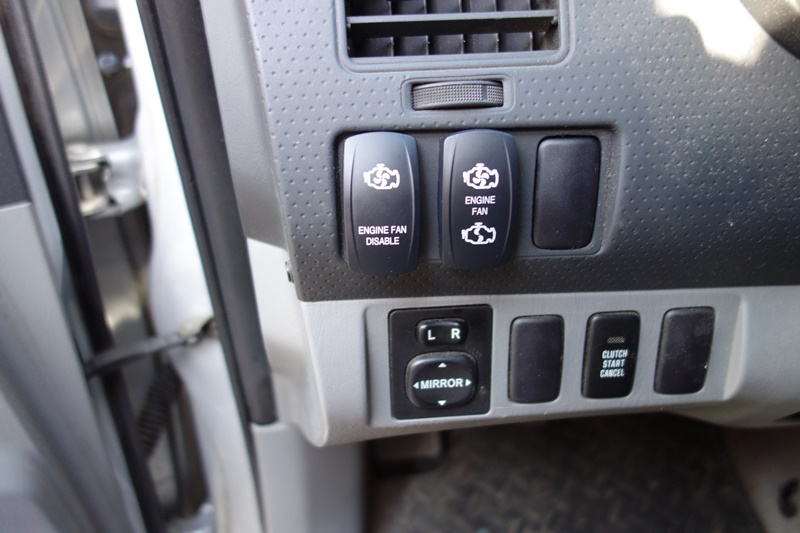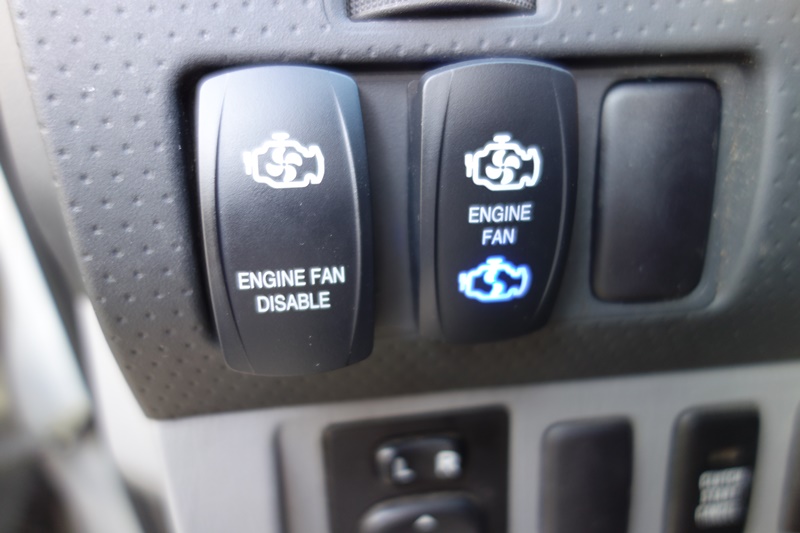Power, Switches, and Indicators:
The multiple main power feeds for the fans come directly from a crimped lug on the battery positive terminal and run through fuses on the RTMR panel before going to their destinations. All the ground wires under the hood similarly run from their destinations and come together to run to the battery negative terminal through a crimped lug.
Within the cab, the accessory circuit was tapped using a fuse tap (on the protected side of the fuse), and is used for the fan relay positive triggers (pins 85) of the main three relays and for the indicators in the cab. Basically, if the truck is not on none of the fans or other things will run so you can’t accidentally kill your battery unless you leave the truck on. All the grounds in the cab come together to run to a grounded bolt just below the fuse panel.

In order to provide feedback to and control of the fans from the cab, I chose to use lighted V-Series Contura switches from Carling Technologies. The switches you need are circuit “4” for the fan disable switch and circuit “6” for the engine fan switch. I used dual independent lights for both switches, lamp circuit U/Y (Circuit A/1 can be used for a single lighted fan disable switch). I sprung for LED lights and customized face plates, but these switches are also available in generic trim for significantly less money.

The fan disable switch is a two position switch which is unlit when on, but lights up red if you have the fans turned off. Typically this switch is left on and allows the power to flow from the accessory circuit to the fan relay triggers, but if you turn it off it diverts the power from the relay triggers to run the lights, thus without power the relays will not turn on, even if the ground triggers occur. The bright glowing red is the visual clue the system is bypassed, in case of accidentally bumping the switch.
The engine fan switch is a three position switch which lights up the bottom section blue when the fans are on low, and the top section blue when the fans are on high. It does this by using the fan relay low and high ground trigger wires connected to the grounds of the lights, which have power through the accessory circuit. If something triggers and grounds the relays, it will also ground the light which will then turn on. Additionally, you can press the switch to the top or bottom to override and turn the fans on low or high. It does this by manually grounding the appropriate low or high relay trigger, just like if the temperature switch had turned on. (Note: Manually pressing low will not override automatic high, this is by design.) These switches fit into factory spaces in the Tacoma, but you have to cut out a little of the plastic in the back part of the space.

